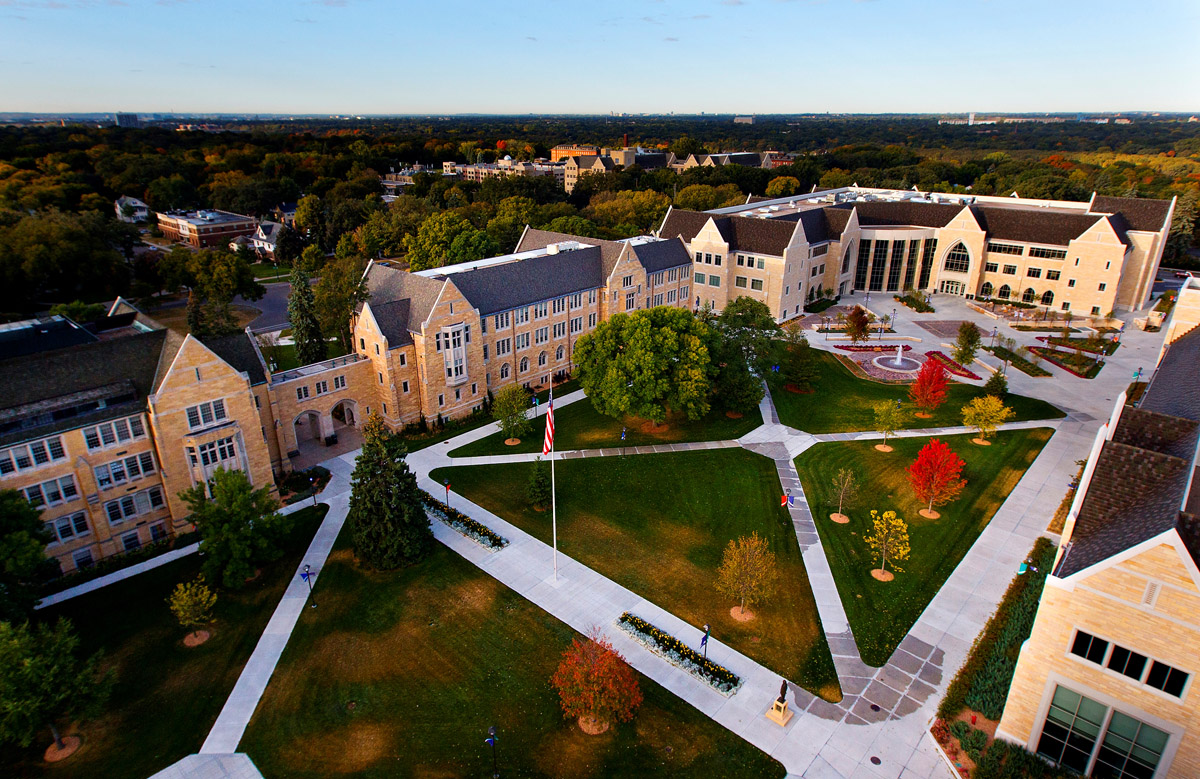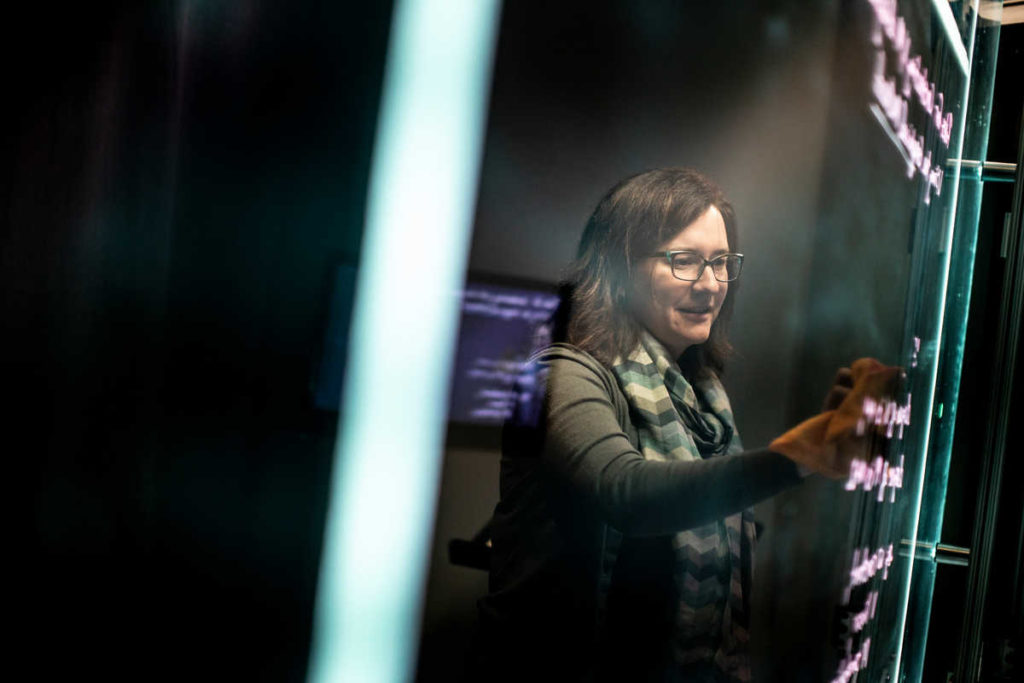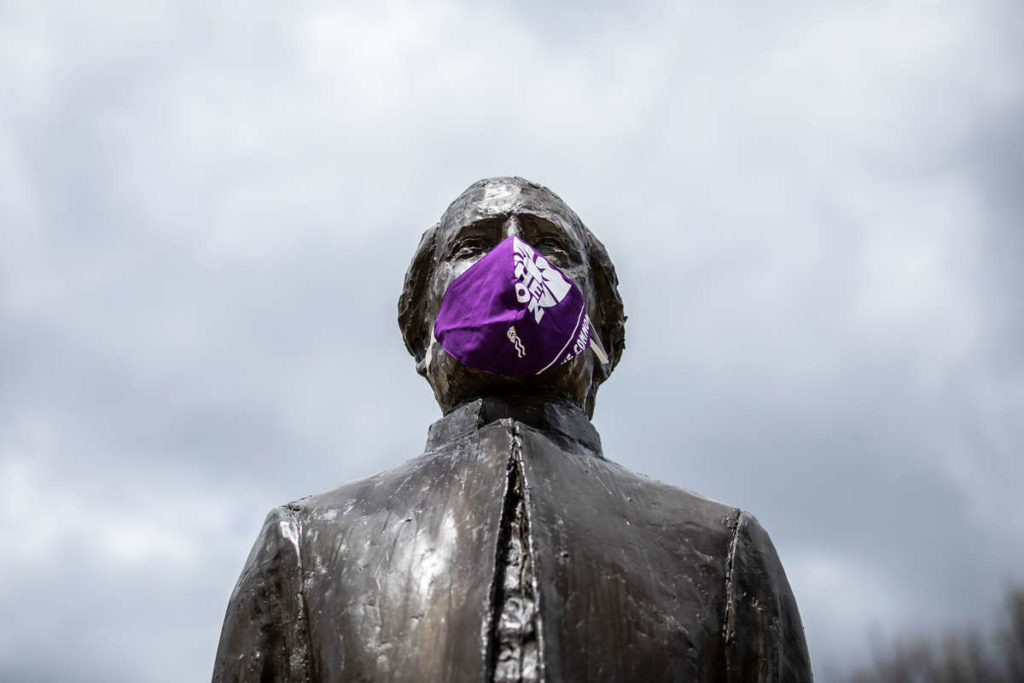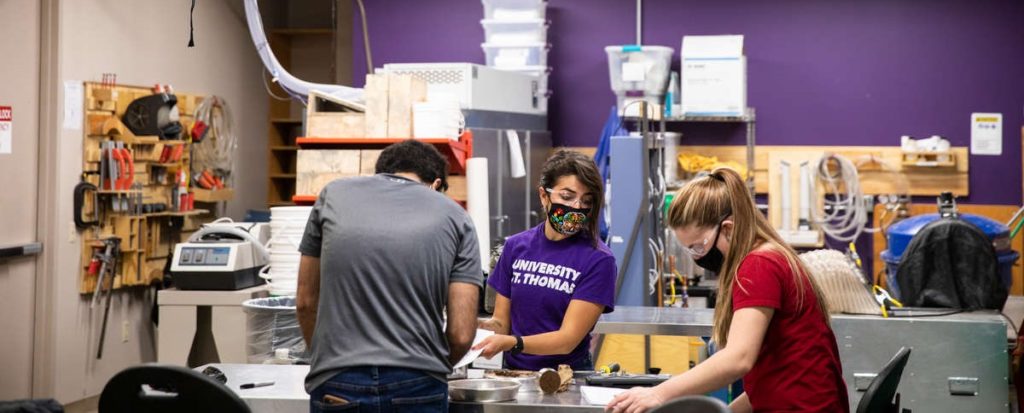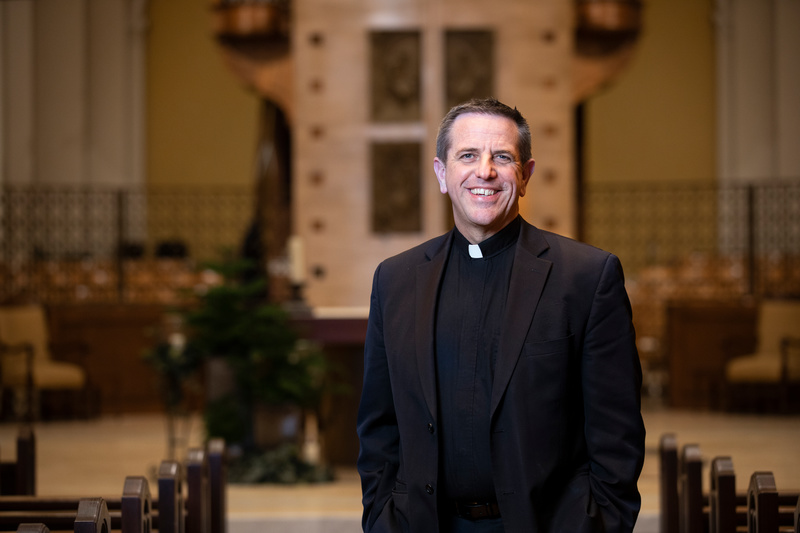In front of St. Thomas’ largest virtual gathering since courses moved online, President Julie Sullivan on May 13 provided a glimpse of what an in-person fall semester may look like as the community prepares to guard itself against the COVID-19 virus.
Sullivan outlined a return to campus for students that includes social distancing and mask wearing as norms, a strong focus on hygiene and sanitization, and viral testing and contact tracing. Sullivan also thanked community members for the work and sacrifices undertaken to this point, and answered a wide range of questions.
Click here to view in OneStThomas an FAQ document that includes questions asked during the town hall, and here to view a recording of the town hall.
“I know this is a very scary time for many people. It’s an uncertain time for everyone. I continue to be filled with optimism, hope and gratitude,” Sullivan said. “Our mission is too important, and we have to get on with delivering it in a safe manner. We have to get to delivering the personal, whole-person education we’re known for.”
Sullivan talked about St. Thomas’ COVID-19 journey in terms of three stages.
The first stage occurred as the university transitioned in March to online learning and mainly off-campus living and working.
“In a matter of a week to a week and a half we changed the whole operation from all of us being there on campus … to where we are today,” she said. “It was an extraordinary feat, and we did it well because of all of you.”
As St. Thomas continues to operate as an essential business, the next stage is the university community “living and operating in the presence of the virus, but doing so with resourceful innovation, with every appropriate protocol, and extra precautions for those at risk."
The second stage, Sullivan said, would contain three main characteristics:
- Social distancing: “Distancing is still the most effective way to stop the spreading of the virus,” Sullivan said. Educational delivery could be based on HyFlex models, with some students physically in classrooms while others access classes online as needed. A reinvention of buildings on university campuses would create enough space for distance moving, with signs and directions reinforcing spacing.
- Hygiene and sanitization: Sullivan outlined the need for an enormous influx in sanitization work to clean facilities, a conversion to a ubiquitous mask culture on campus, and the full adoption of personal hygiene practices. The university has already ordered thousands of masks and is working to secure enough sanitization products to support the safe return of community members to campus.
- Viral testing and contact tracing: The capacity to sufficiently test and trace contact with those who have tested positive represents another critical element, and Sullivan acknowledged the university has the least control over this facet of a return to campus. “I’ve worked hard to make sure higher education is given priority for viral testing and contact tracing [in Minnesota],” Sullivan said. “I do have confidence we will build that capacity between now and fall semester, and that St. Thomas will be part of that capacity. We are in an environment where we will always have to reassess, but today I expect we will have that capacity.”
The third stage represents a widespread vaccine and/or herd immunity, but a potential time frame of 12-18 months is “too far away for us to wait for it,” Sullivan said. That means in the fall semester delivering an experience students and families want in an environment that provides confidence and keeps them safe, Sullivan said, as well as making it as financially accessible as possible. The university has taken major steps to address that, Sullivan said, including the awarding of $3 million in Common Good scholarships for incoming students, as well as more than $300,000 given out so far through the Student Emergency Fund.
“We’re doing everything we can,” Sullivan said.
Sullivan stressed the imperative for St. Thomas to continue fulfilling its mission and educating students to “become those morally responsible leaders who will rewrite the next chapter. Those are the kind of leaders that will help us address the glaring inequities this virus is shining a light on. It’s shining a light on so many unsustainable aspects facets of our world,” she said. “We have a renewed appreciation of the common good, and we need complex problem-solvers with empathy and an ability to lead change in this new world."
